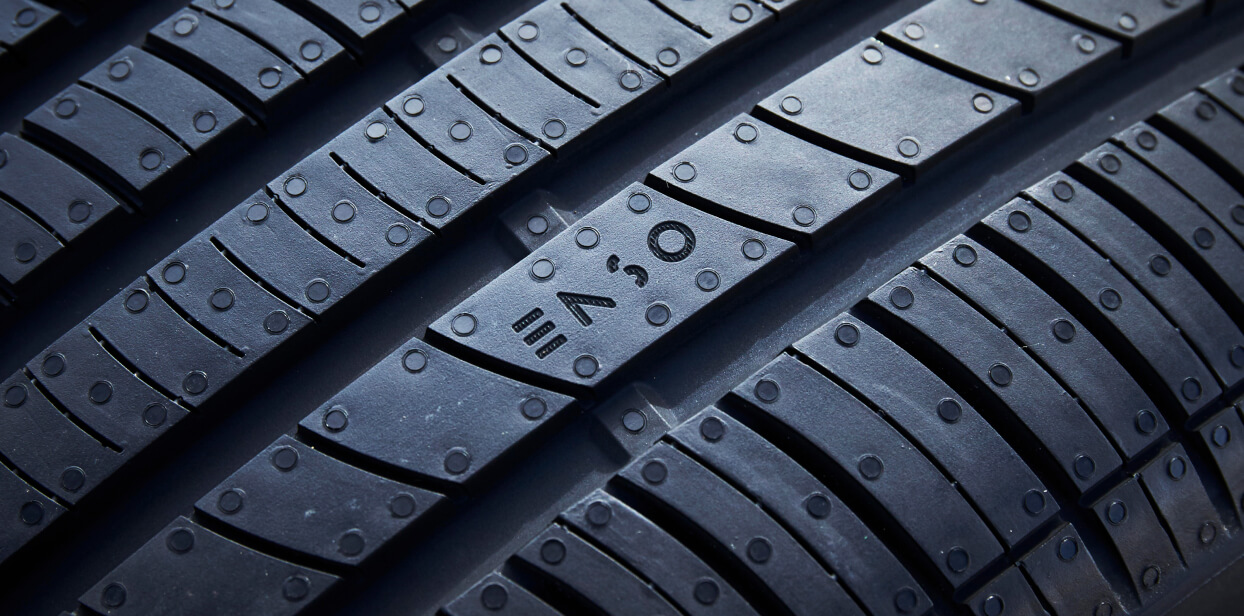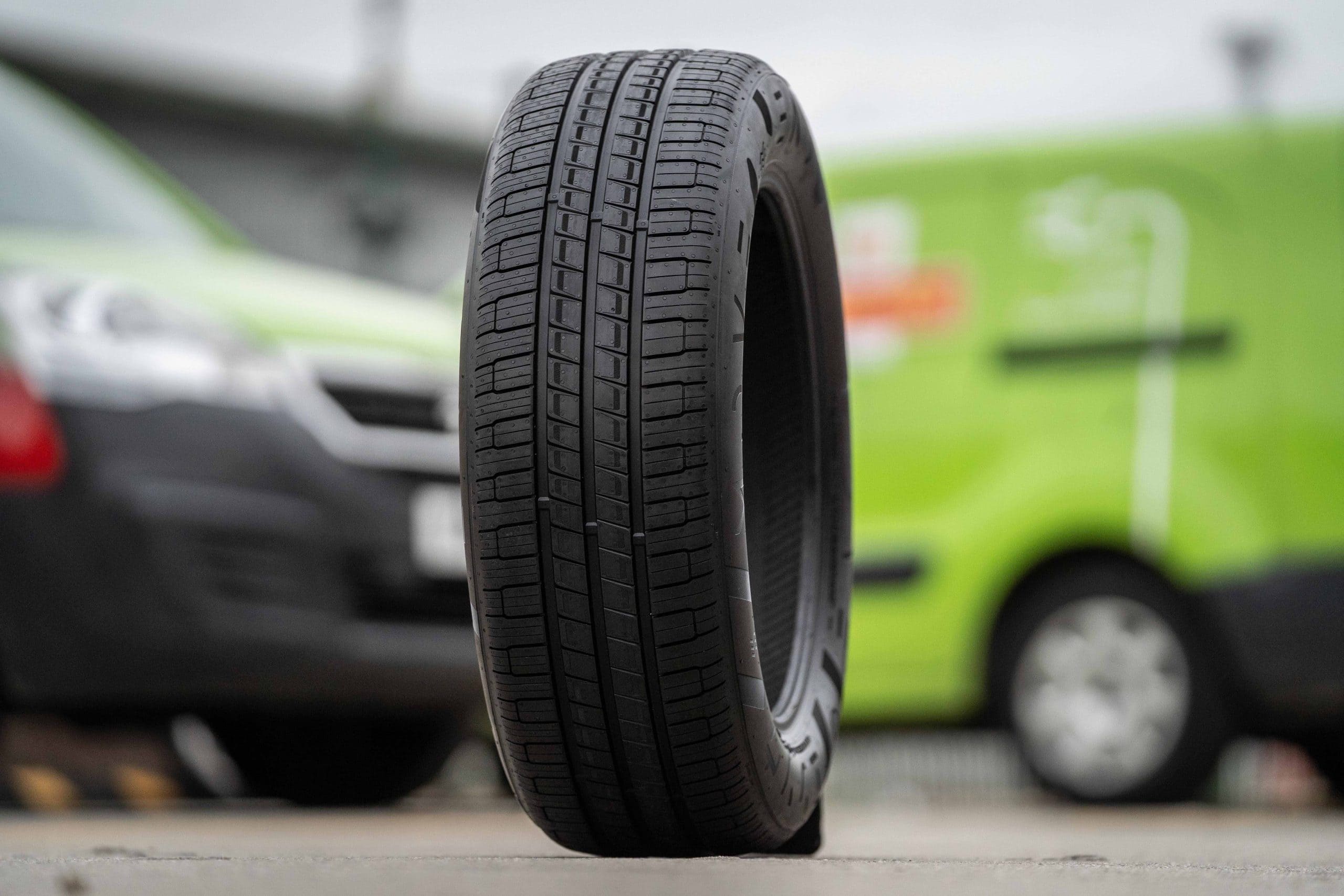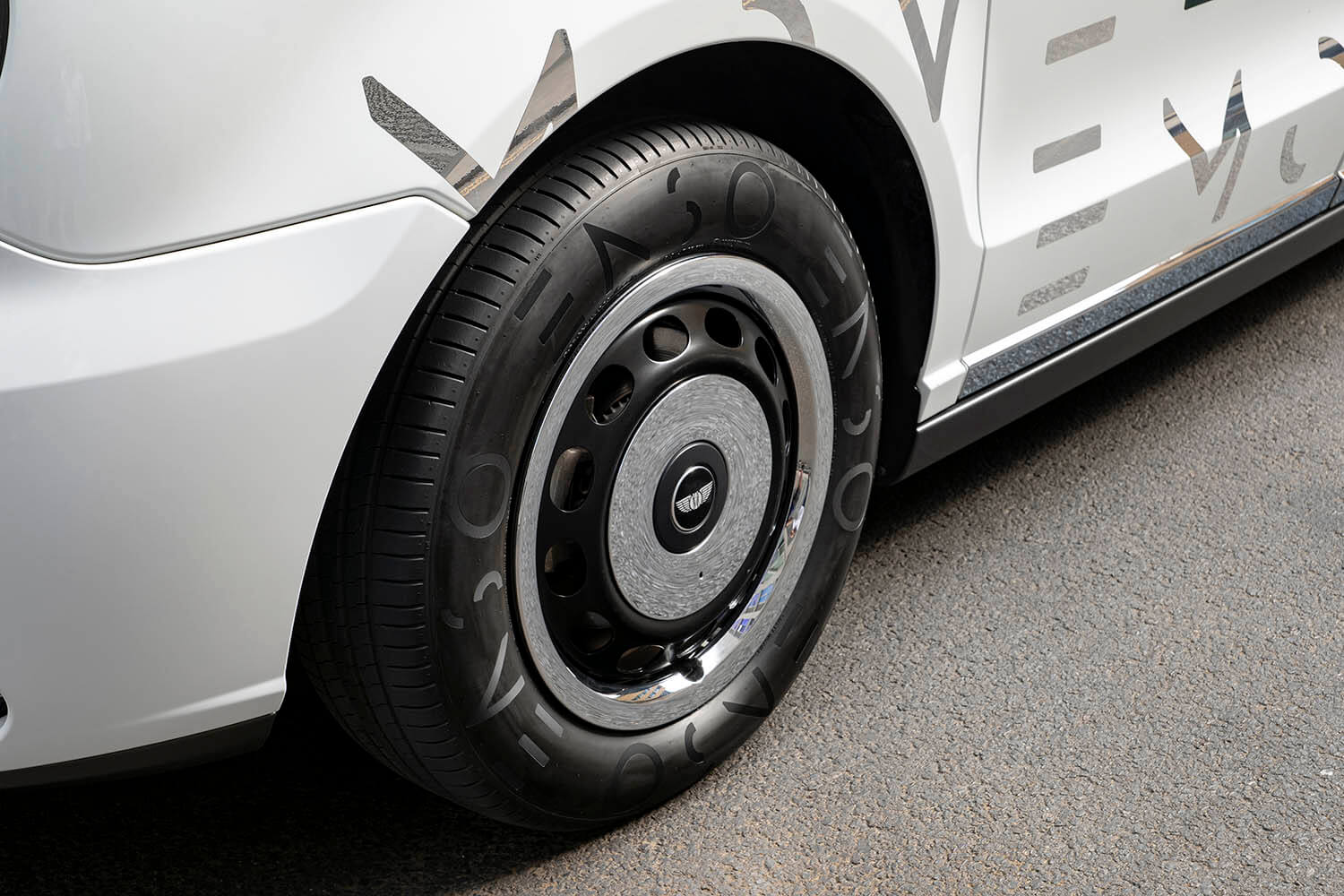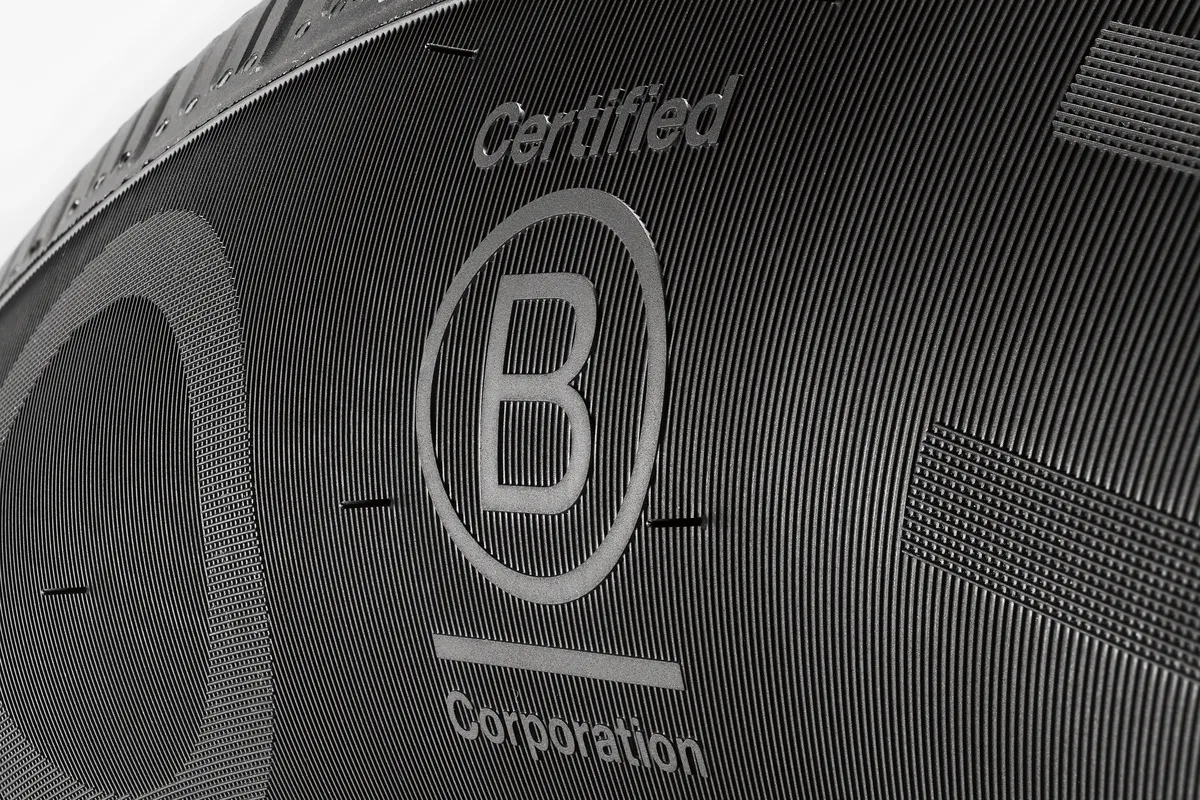News
December 12, 2024
How to Check Tyre Tread: A Simple Guide for Every Driver

Understanding how to check the tyre tread depth is an essential skill for every driver, ensuring safety and optimal vehicle performance. Tyres with the right tread depth provide better grip on the road, which is crucial for both routine and emergency situations. Regular checks can help prevent accidents and save money by extending the life of your tyres. In this guide, we will walk you through the steps to check tyre tread effectively, empowering you with the knowledge to maintain your vehicle with confidence. This article will answer some of the most common questions when it comes to tyre tread depths; why is tyre tread depth important? What is the legal minimum tyre tread depth? What causes tyre tread damage? And how to perform an inspection of tyre tread depth?
Understanding Tyre Tread
Importance of Tread Depth
Tread depth is crucial for safety and performance, especially in wet conditions. It ensures better grip by channelling water away from the tyre, reducing the risk of aquaplaning. Adequate tread depth in individual tyre grooves is essential for optimal braking performance, ensuring shorter stopping distances on wet roads. This is particularly critical in emergency situations where every metre matters. Worn tyre treads significantly reduce traction, increasing the risk of losing control, especially at higher speeds. Maintaining proper tread depth enhances safety and driving confidence. Regularly checking your tyre tread depth not only enhances safety but also maximises fuel efficiency. A tyre with lower rolling resistance, supported by adequate tread depth, can enhance fuel efficiency and improve mileage. It also extends the lifespan of your tyres, saving you money in the long run. Maintaining the correct tread depth is a simple yet effective way to keep your vehicle performing optimally.
Legal Requirements for Tread
In the UK, legal regulations dictate a minimum tread depth for vehicle tyres. The law requires that car tyres must have a minimum tread depth of 1.6 millimetres across the central three-quarters of the tyre, around its entire circumference. This rule ensures that tyres maintain a safe level of grip, particularly in adverse weather conditions. Driving with tyres below this minimum depth not only endangers your safety but also risks significant legal consequences. If you're found driving with insufficient tread depth, you could face fines of up to £2,500 per tyre and three penalty points on your driving license. Regularly checking your tyre tread depth is not just a safety measure but also a legal obligation. To avoid penalties and maintain safety, it's advisable to replace tyres before they reach this minimum legal tread depth limit. Tyre condition is typically inspected during an annual vehicle service and as part of an MOT. If issues are found the service provider may recommend replacements to ensure the vehicle remains safe and roadworthy. Staying informed about tyre condition requirements is an essential part of responsible vehicle ownership.
Effects of Worn Treads
Worn tyre treads can significantly compromise vehicle safety and performance. As the tread decreases, the tyre's ability to channel water away diminishes, increasing the risk of aquaplaning. This loss of traction can lead to longer stopping distances, making it harder to brake efficiently, particularly in wet conditions. Furthermore, worn treads reduce cornering grip, which can cause your vehicle to slide or skid more easily. This is especially dangerous on sharp bends or during sudden manoeuvres. Besides safety concerns, worn treads can affect fuel efficiency or reduce the range of electric vehicles. Tyres with inadequate tread depth often lead to increased rolling resistance, causing the engine to work harder and consume more fuel or drain the battery more quickly if it’s an EV. This not only impacts your energy bills but also contributes to higher emissions. Additionally, tyres with uneven or excessive wear patterns can create vibration or noise, reducing driving comfort. Addressing worn treads promptly is crucial to maintaining both safety and cost-effectiveness.
Tools for Measuring Tread
Using a Tread Depth Gauge
A tread depth gauge is a handy tool that provides precise measurements of your tyre's tread depth. To use the tyre tread depth gauge yourself, first ensure your vehicle is parked on a flat surface and the tyres are cool. Begin by placing the gauge's probe into the tread groove, making sure it is perpendicular to the tyre. Press the gauge down until the base rests on the tread surface. The gauge will then display a reading, typically in millimetres, indicating the current tread depth. It's recommended to take measurements at multiple points around the tyre, including the outer, middle, and inner sections, to check for uneven wear. A consistent depth across these areas suggests even wear, while discrepancies may indicate alignment or inflation issues. Regular use of a tread depth gauge helps maintain safety by ensuring your tyres remain above the legal minimum and perform optimally. This simple tool is an essential part of any driver's maintenance kit.
The Coin Test Method
The coin test is a simple and quick way to estimate your tyre's tread depth without specialised tools. In the UK, a 20p coin can be used for this purpose. To perform the 20p test yourself, insert the coin into the tread grooves of your tyre. If the outer band of the 20p coin is fully visible, the tread depth is likely below the legal minimum of 1.6 millimetres, indicating it's time to replace the tyre. This method should be conducted in several places around the tyre, including the edges and centre, to check for uneven wear. While the coin test is not as precise as using a tread depth gauge, it offers a convenient way to assess tyre condition quickly. Regular use of the coin test can help you catch tread issues early, allowing you to address potential safety hazards promptly. However, for the most accurate measurement, using a digital or analogue tread depth gauge is recommended.
Visual Inspection Techniques
Inspecting your tyres regularly is essential for monitoring their tread health and overall condition. Start by examining each tyre’s appearance for signs of uneven wear, which could point to alignment, suspension, or pressure issues. Check the tread shoulders and centre for excessive wear, and look for visible damage such as cuts, cracks, or bulges that may compromise tyre integrity. Inspect for embedded objects like stones or nails that could cause punctures, and don’t forget to check the sidewalls for abnormalities.
Tyres are equipped with tread wear indicators—small bars running perpendicular to the tread. When these bars are level with the tread surface, it is time to replace the tyre. Regular visual inspections, combined with other measurement methods, help identify issues early to ensure safety and optimal performance.
Step-by-Step Guide to Checking Tread Depth
Preparing for Inspection
Before checking your tyre tread, ensure you are properly prepared for accurate results. Park your vehicle on a safe, flat surface and engage the handbrake to prevent movement. Avoid inspecting tyres immediately after a long drive, as heat can slightly affect tyre pressure. It is best to inspect tyres when they are cold.
Gather the necessary tools, such as a tread depth gauge or a 20p coin, and have a torch handy for better visibility, especially in low-light conditions. Wear gloves to protect your hands from dirt or sharp objects lodged in the tread. A notepad can also be helpful for recording tread measurements or observations about tyre condition. Proper preparation ensures a thorough and effective tread inspection.
How to Perform a Tyre Tread Check
Step 1: Inspect Each Tyre Individually
Start by examining each tyre thoroughly. Use a tread depth gauge for precise measurements by inserting it into the grooves at multiple points across the tread—outer edges, centre, and inner edges. Record your readings to check for consistent tread depth across the tyre.
Step 2: Try the 20p Coin Test
For a quick assessment of legal tyre tread depth, use the 20p coin test. Insert the coin into the grooves. If the outer band of the coin is visible, the tread depth is below the UK legal minimum of 1.6millimetres, and the tyre needs replacing.
Step 3: Look for Signs of Damage
While inspecting the tread, look for cuts, cracks, bulges, or embedded objects like nails or stones that could compromise tyre integrity.
Step 4: Check for Uneven Wear
Uneven wear patterns may indicate alignment issues or improper tyre inflation. If you notice irregular wear, consult a professional for further inspection.
This structured approach helps you detect any issues early, ensuring your tyres remain safe and perform optimally on the road.
Interpreting Tyre Tread Results
After checking the tread depth, it's essential to interpret the results accurately.
If your tread depth is above 1.6millimetres across all tyres, they meet legal requirements and are safe for use. However, consider replacing them once the depth nears 3millimetres, as wet-road performance starts to decline before reaching the legal minimum.
Consistent wear across the tyre typically indicates regular and balanced usage. Uneven tread depths across the tyre might indicate problems such as misalignment, incorrect tyre inflation, or suspension issues. If the outer edge is more worn, it indicates under-inflation, while excessive wear in the centre suggests over-inflation.
If you notice any damage or irregular wear patterns on your tyres, it is crucial to consult a professional for expert advice. Regularly inspecting and addressing potential issues early not only extends the lifespan of your tyres but also enhances road safety and maintains peak vehicle performance. Prioritising timely tyre maintenance avoids costly repairs and ensures the vehicle remains safe and efficient. Address any tyre concerns promptly to drive with confidence.
Common Tread Wear Patterns
How to Identify and Address Uneven Wear
Proper tyre maintenance is essential for vehicle safety and performance, and understanding common tread wear patterns can help you spot issues early. Uneven tyre wear often points to underlying problems with your vehicle, such as improper inflation, alignment, or suspension issues.
Here's What to Look For:
Edge Wear
One common pattern is edge wear. If the outer or inner edges of the tyre wear faster than the centre, it is usually a sign of incorrect inflation. Under-inflation leads to edge wear, while over-inflation can cause the centre of the tyre to wear more quickly.
Cupping or Scalloping
Another pattern is cupping or scalloping. which appears as uneven dips around the tread. This can be due to suspension problems or a tyre balancing issue.
Feathering
Feathering, where tread ribs develop a sawtooth shape, usually points to improper alignment.
Tips For Preventing Uneven Tyre Wear
Regularly rotating tyres and keeping them properly inflated can help prevent uneven wear. It’s important to address any uneven wear patterns promptly by consulting a professional, as ignoring them can lead to reduced tyre lifespan and compromised safety. Early detection helps maintain optimal vehicle performance and can prevent costly repairs.
What Causes Tread Damage and How to Prevent It
Tread damage happens for several reasons, and it can reduce tyre life and safety. One common cause is incorrect tyre pressure - under-inflated tyres wear out on the outer edges, while over-inflated tyres wear more in the centre. Aggressive driving, like hard braking or rapid acceleration, can also wear tyres faster. Poor road conditions, such as potholes or debris, may cause cuts or punctures. Misaligned wheels, often from hitting curbs or potholes, lead to uneven wear, while suspension issues, like worn shock absorbers, can cause wavy patterns called cupping. To prevent tread damage, check tyre pressure regularly, rotate your tyres, and get alignment and suspension checked as part of routine maintenance. Adopting smoother driving habits also helps tyres last longer, saves money, and keeps your vehicle safer on the road.
Preventing Tread Issues
Preventing tread issues starts with regular maintenance and careful driving. Keep tyres inflated to the manufacturer’s recommended pressure to prevent uneven wear and improve fuel efficiency. Rotate tyres every 6,000 to 8,000 miles to promote even wear and extend tyre life. Check wheel alignment regularly, especially after hitting curbs or potholes, to avoid uneven tread wear. Inspect tyres monthly for damage like cuts or embedded objects and address issues immediately. Smooth driving, gradual acceleration, and avoiding overloading your vehicle also reduce tyre stress. These simple steps help extend tyre life, improve safety, and maintain performance.
Maintaining Optimal Tread
Regular Tyre Rotation
Rotation involves changing the position of each tyre on your vehicle. This process balances natural wear caused by weight distribution and driving dynamics, like front tyres wearing faster on front-wheel-drive vehicles. Consistent rotation improves performance, safety, and fuel efficiency. When rotating tyres, consider the manufacturer's recommendations, as the rotation pattern might vary based on the tyre type and vehicle drive system. By making tyre rotation part of routine maintenance, you can prevent premature wear and enjoy smoother, safer driving.
Ensuring Proper Inflation
Proper tyre inflation is essential for tread longevity, safety, and handling. Under-inflated tyres wear on the outer edges, while over-inflated ones wear in the centre, reducing traction and increasing the risk of failure. Check tyre pressure monthly with a reliable gauge, ideally when tyres are cold, and adjust based on the recommended levels in your vehicle manual or door label. Properly inflated tyres also boost fuel efficiency by reducing rolling resistance. Regular checks help maintain tread life, improve performance, and ensure safer driving.
Professional Tread Assessment
Having your tyres professionally assessed ensures their safety and performance. Experts thoroughly check tread depth, wear patterns, and hidden damage like cuts or punctures. They also identify issues such as misalignment or suspension problems that may cause uneven wear. Professional assessments can recommend solutions like alignment adjustments or balancing to extend tyre life and improve handling. Regular checks are especially valuable for high-mileage drivers or those in tough conditions, helping prevent costly repairs and ensuring safer, more confident driving.
October 24, 2024
ENSO CEO on the Fully Charged Show Podcast

Gunnlaugur Erlendsson joined Robert Llewellyn on the Fully Charged Show Podcast to discuss ENSO’s innovative tyre technology, its role in reducing tyre pollution, and its vision for the future of EVs.
October 22, 2024
ENSO Innovation Highlighted in WIRED

WIRED’s feature, "The Race to Create the Perfect EV Tyre," spotlighted ENSO’s tyre technology as a solution to improving EV performance while reducing environmental impact.
September 12, 2024
Uber and ENSO Partner for Earthshot Prize Initiative

Uber announced a strategic international partnership with ENSO as part of its Earthshot Prize collaboration. The deal aims to equip Uber drivers with ENSO’s low-emission EV tyres, promoting sustainability across fleets.
September 10, 2024
Prince William Visits ENSO to Launch Uber Partnership

Prince William visited ENSO’s London site to launch the Uber partnership. The event included the fitting of an ENSO tire to an Uber EV, symbolising the collaboration’s significance.
July 12, 2024
ENSO CEO Speaks at Bloomberg Green

ENSO CEO Gunnlaugur Erlendsson spoke at Bloomberg Green in San Francisco, emphasising the urgent need to address tyre pollution. The talk highlighted ENSO’s pioneering approach to clean tyre technology.
ENSO revealed its plans to build a $500 million carbon-neutral tyre factory in the U.S., focusing on sustainable manufacturing. This exclusive announcement was featured in The Verge, showcasing ENSO's commitment to reducing the environmental impact of tyres globally.
ENSO, the tyre technology company that makes better tyres for electric vehicles (EVs), has signed a Letter of Interest (LOI) with the Export-Import Bank of the United States (U.S. EXIM Bank) to establish a groundbreaking carbon-neutral tyre factory in America. U.S.-based technology partners Rockwell, global sustainable development firm Arup and US-based investors 8090 Industries and Galway Sustainable Capital, are supporting ENSO.
The first-of-its-kind tyre factory will be carbon-neutral without purchased offsets, utilising carbon-neutral raw materials, building materials and 100% renewable energy. In its first phase, the factory will produce 5 million EV tyres by 2027 and create 600 jobs, rising to 2,400 jobs when built out to full production capacity of 20 million tyres – 8% of America’s total annual tyre market. The ENSO technology campus will integrate research and development with production under one roof to accelerate and scale innovation.

Announced at the SelectUSA Investment Summit in Washington DC, potential factory locations include Colorado, Nevada, Texas, and Georgia, with other states in consideration. The U.S., particularly California, has a significant EV consumer base and is leading efforts to regulate tyre efficiency and emissions, making the U.S. the ideal market for ENSO.
ENSO CEO Gunnlaugur Erlendsson said, "The U.S. is the best place for ENSO to establish its first carbon-neutral tyre factory. With strong regulatory support and a significant market opportunity, we are committed to bringing our innovative, low-emission, low-cost tyres to American consumers. This factory will make tyres more affordable, reduce tyre pollution, create great jobs and drive sustainability in the U.S. tyre industry.”
The U.S. regulatory environment strongly supports ENSO’s move to America. Initiatives like the Inflation Reduction Act have transformed the automotive sector and enabled more ambitious EPA (Environment Protection Act) emissions standards, paving the way for similar advancements in the tyre industry. Programs such as the California Energy Commission’s (CEC) Replacement Tyre Efficiency Program and the California Environmental Protection Agency’s (CalEPA) efforts to control toxic chemicals such as 6PPD in tyres align with ENSO's goals, by setting out minimum efficiency and environmental standards for both new and aftermarket tyres.

Tyres are critical to keeping America’s economy moving. Without tyres, all 275 million vehicles in the U.S. would grind to halt. Currently, the majority of tyres sold in the U.S. are imported. This factory will help reduce America’s reliance on imports, enhancing domestic production capabilities. There is a big consumer appetite in the U.S. for ENSO’s tyre innovation. Nearly half (47%) of Americans would be more encouraged to buy a set of tyres if they were made in the U.S., 46% if they used fewer toxic materials, 43% if they produced fewer emissions, and 41% if they were made from recycled materials.
ENSO’s mission is to make EVs more successful and reduce tyre pollution, saving costs for every American. ENSO’s tyres already increase EV range by 10% and reduce particulate matter emissions by 35%. By producing fewer, longer-lasting tyres with better technology, ENSO aims to cut tyre pollution.
Tyre pollution is a significant issue, responsible for six million tons of particulate matter emitted globally each year. Tyre pollution is a major contributor to ocean microplastic pollution and local air pollution, while tyre production is carbon intensive and creates huge amounts of waste at the end of life. ENSO, a finalist in the ‘Clean Our Air’ category of The Earthshot Prize, the prestigious annual environmental award established by Prince William, is leading the way on environmental standards in the tyre industry. ENSO is leading efforts to decarbonise the tyre industry and is committed to completely phase out all fossil fuel based raw materials from its products by 2030, replacing them with bio-based renewable and low-carbon alternatives.
The U.S. has a major market opportunity to lead the transformation of the tyre industry and to incentivise EV adoption. America doesn't make enough tyres, and ENSO’s factory will be a major step toward achieving these goals, ensuring economic benefits and environmental sustainability for American consumers. This factory therefore represents a significant investment in setting a new standard for the future of American tyre manufacturing.
June 24, 2024
Reuters Covers ENSO’s U.S. Factory Plans

Reuters reported on ENSO’s announcement to build a $500 million U.S. factory, which will produce sustainable EV tyres at scale. This initiative will create green jobs and address tire pollution.
Fast Company recognised ENSO’s EV tyres in the transportation category of its World Changing Ideas 2024 list. ENSO was celebrated for its role in reducing tyre pollution and extending EV range.


